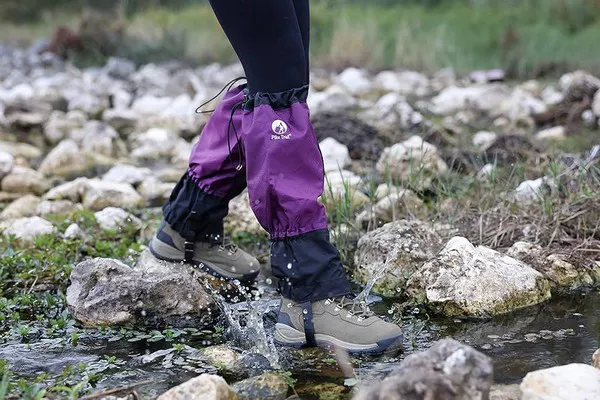Hiking is a rewarding activity that offers both physical exercise and a deep connection with nature. However, to fully enjoy the experience and avoid discomfort or injury, choosing the right footwear is crucial. While regular sneakers may suffice for a stroll in the park, hiking sneakers are specifically designed to handle the diverse challenges of hiking trails, including rough terrain, varying weather conditions, and extended wear.
Hiking sneakers differ from regular sneakers in several key ways. They offer enhanced grip, support, and durability, which are essential for tackling trails that are often uneven, rocky, or muddy. This guide is aimed at both beginner and experienced hikers, with a focus on those who engage in day hikes and short backpacking trips.
SEE ALSO: Where Are Atika Sandals Made?
Key Features to Consider
Fit:
The fit of your hiking sneakers can make or break your hiking experience. A snug and comfortable fit is essential to prevent blisters, foot fatigue, and other issues. Look for a proper lacing system that allows you to adjust the tightness according to your foot shape. A short break-in period is often necessary to ensure the sneakers mold to your feet, but be wary of shoes that require too long of a break-in, as they may not be ideal for hiking.
Support:
Support is another critical factor, particularly ankle support for uneven terrains. Sneakers with good arch support and midsole cushioning will help distribute your weight evenly and reduce the impact on your joints. This is especially important if you plan on carrying a backpack, as the added weight can strain your feet and ankles.
Grip:
The tread pattern and rubber compound of the soles play a significant role in the sneaker’s grip. A well-designed tread can provide excellent traction on various surfaces, including rocks, mud, and snow. The rubber compound should be durable yet flexible enough to adapt to different terrains, ensuring you stay secure on your feet.
Water Resistance:
Hiking often involves encountering wet conditions, whether from rain, streams, or dew-covered grass. Sneakers with waterproofing technology will keep your feet dry, but it’s important to balance this with breathability to avoid excessive sweating. Look for materials that offer a good combination of water resistance and ventilation.
Durability:
The quality of the materials and construction will determine how long your hiking sneakers last. Durable sneakers are typically made from high-quality leather, synthetic materials, or a combination of both. The build should be sturdy enough to withstand the wear and tear of rough trails but not so rigid that it sacrifices comfort.
Weight:
The weight of your hiking sneakers can significantly affect your hiking experience. Lighter sneakers are easier to move in and can help reduce fatigue, but they may offer less support and durability. Heavier sneakers, on the other hand, provide more protection and support but can slow you down and increase the strain on your legs.
Price:
Hiking sneakers come in a wide range of prices, from budget-friendly options to high-performance models. While it’s tempting to go for the cheapest option, investing in a quality pair can save you from discomfort and potential injury in the long run. That said, there are excellent mid-range options that offer a great balance of features and cost.
Types of Hiking Sneakers
Trail Running Shoes:
These are lightweight and breathable, making them ideal for fast-paced hiking on well-maintained trails. They offer less protection and support compared to other types but are perfect for those who prioritize speed and agility.
Hiking Boots:
Hiking boots are more robust and provide superior ankle support, making them suitable for challenging terrain and longer hikes. They are heavier and less flexible, but they offer the best protection against rough conditions.
Low-Cut Hiking Shoes:
These shoes offer a versatile balance of support and flexibility. They are lighter than boots and provide more freedom of movement, making them ideal for day hikes and moderate trails.
Mid-Cut Hiking Shoes:
Mid-cut shoes offer increased ankle support compared to low-cut models, making them better suited for uneven terrain. They provide a good compromise between the flexibility of low-cut shoes and the support of hiking boots.
Top Hiking Sneaker Recommendations
Salomon X Ultra 4 GTX:
Pros: Excellent grip, waterproof, lightweight.
Cons: Slightly narrow fit, higher price point.
User Experience: Many users praise its performance on wet and rocky terrain, though some find it too tight for wider feet.
Merrell Moab 3:
Pros: Comfortable, durable, budget-friendly.
Cons: Not fully waterproof, heavier than some options.
User Experience: Known for its comfort right out of the box, making it a favorite among casual hikers.
Hoka One One Speedgoat 4:
Pros: Superior cushioning, lightweight, great for trail running.
Cons: Limited ankle support, may wear out faster on rugged terrain.
User Experience: Ideal for those who prefer a cushioned ride, especially on longer day hikes.
La Sportiva Spire GTX:
Pros: Breathable, waterproof, excellent support.
Cons: Expensive, break-in period required.
User Experience: Highly rated for its breathability and support, though the break-in period is longer than some other models.
Finally, to prevent blisters and other foot issues, consider using high-quality hiking socks and pay attention to hot spots on your feet during hikes.

